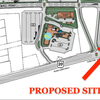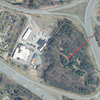Board enthused over 27M plan to upgrade schools
GUILDERLAND - The school board is largely supportive of a $27 million proposal to renovate the district's five elementary schools, improve technology and safety, and build a new district office.
A committee, working with Collins & Scoville Architects, that had studied the matter for months, paring down plans from $38 million, presented its report to the board on Tuesday night.
"We freely admit it's a large number," said Superintendent Gregory Aidala, adding that, if voters approve the proposal, it would mean an annual tax increase of $38 for the average Guilderland homeowner.
The facilities committee was formed because the district is eligible for $1.78 million in EXCEL (Expanding our Children's Education and Learning) Aid, a one-time offer from the state that must be used by next year. Eligible projects include those related to education technology, health and safety, accessibility, and energy.
"Obviously we've gone beyond the $1.78 million," said Aidala.
Board member Hy Dubowsky praised the plan for following the board's priority of improving technology education. "It doesn't happen cheap," he said. "It's very well thought out."
"I know roof repair...is not sexy," said board President Richard Weisz. "I just hope the community understands we have to fix the buildings..."
He went on to say, "The 800-pound gorilla in the room is we're anticipating a 10-percent drop in enrollment...I can see some people saying, 'Why are we spending so much"'"
Aidala responded, "Our elementary buildings need to be renovated...There will still be significant numbers of students."
If the public approves the project in the fall, it could be completed by September of 2010, said Assistant Superintendent for Business Neil Sanders.
Guilderland gets about 64 percent in state building aid, which would cover about $16.2 million, said Sanders; another $1.78 million would come from EXCEL Aid; and $600,000 would come from the district's capital reserve.
The remainder would come from tax levy and Sanders estimated a Guilderland resident with a $180,000 home, the town average, would pay $38 a year, or just over 21 cents per $1,000 of assessed value.
The project would be funded with money borrowed for 15 years, said Sanders, and debt service will amount to about $650,000 over the life of the bond. In 2010, he said, the district's debt service will be reduced by about $650,000 and then the following year by about $450,000 as earlier debts are retired.
"This is a very good time with expiring debt coming up," said Sanders.
The committee's full report is posted on the district's website: www.guilderlandschools.org.
"It's a written document anyone can look at and ask questions," said Aidala.
Weisz encouraged community members to contact board members or e-mail the superintendent with questions about the project, and he urged residents to come to the board's Sept. 11 meeting with their comments.
If the board adopts the proposal in September, it can be put to public vote in November, said Aidala.
Renovations
The committee recommends a total of $17.4 million in renovations at the high school and at the five elementary schools:
- Westmere, built in 1953, and last renovated in 1991;
- Altamont, built in 1953 and last renovated in 1990;
- Guilderland, built in 1956 and last renovated in 1991;
- Lynnwood, built in 1966, and last renovated in 1991; and
- Pine Bush, built in 1994.
The high school went through a $24 million renovation project in the late 1990s and the middle school was renovated and expanded for $20 million in the early 2000s.
William Goergen, a retired architect who lives in Westmere and who served on the committee, showed the board a series of pictures highlighting problems in the buildings.
There are to be improvements to parking and driveways, and to sidewalks and lighting at a cost of $879,500.
"This will help minimize conflicts between buses, cars, and pedestrians," said Goergen.
Roofs will be replaced, windows rehabbed, and chimneys repaired at a cost of $5.4 million.
"The song 'Raindrops are Falling on My Head' should never apply to interior spaces," said Goergen as he showed a picture of a leaking ceiling, followed by a picture of soaked computers being dried out; the computers were salvaged, he said.
Inside the buildings, classroom doors will be replaced and so will worn floor tiles as classrooms are renovated, at a cost of $1.5 million.
Goergen showed a picture of a typical classroom door which he said was not fire-rated and in violation of building codes; he also said the hardware was not handicapped accessible.
Antiquated heating systems will be replaced, ventilation improved, and building controls consolidated at a cost of $6.2 million.
A pipe was pictured with a sign that declared "Danger: Asbestos." Goergen said of the supply pipe to outdated fin-tube radiation, "It's costly and potentially dangerous."
Telephone and public address systems as well as fire-alarm systems will be replaced and wiring and electrical panels will be upgraded at a cost of $3.2 million.
"The technology is almost 20 years old and limited in capability...and availability," said Goergen as he showed a picture of a telephone with a push-button system.
Roof drains will be replaced and so will a water heater and sewage lift station at Altamont Elementary for a cost of $91,200.
Technology and security
Upgrades across the district in technology and in safety and security are slated at $5.7 million.
Cabling in all seven school buildings is to be upgraded and there will be dedicated wiring and power distributions. Each classroom will have a projector and there will be 10 "smart boards" in each elementary school and 20 each in the middle school and high school.
Each school will have a video distribution system and mobile carts for video editing and podcasts. Each school will also have added laptop carts, and, at the high school, components will be put in place for a pre-engineering program.
"We have to show the community we have a curriculum that uses this stuff," said Weisz.
He said of the smart boards, for example, "I'm willing to be persuaded but I'd like to see the curriculum piece that goes with it."
Smart boards, also known as whiteboards as opposed to blackboards, allow students to see and work a computer on a huge screen by the touch of a pen or finger, as if using a mouse, so teachers can create lessons that allow students to participate.
Elizabeth Taylor McNamara, a Guilderland High School graduate and now the senior education consultant with Core BTS Inc., said, "A lot of the money for technology has to do with infrastructure."
It makes sense to install the infrastructure while the ceilings are open to repair leaks, McNamara said. To install it afterwards, she said, would be three times as costly.
She also said that, as part of her work with the committee, she visited each school and found some excellent technology programs in place.
"You have a barrier right now...in elementary schools," she said, "with too few network access points....Teachers said they're constrained right now."
The proposed project will update and increase network access points, said McNamara.
"Until you make it easier for teachers to get to that projector," she said, the curriculum won't move forward. "It has to be fairly seamless to get to the stuff."
She also said that the renovation of the technical education area in the high school was very important to the committee. "The space itself needed major upgrades," she said. "No matter what program you select, that arena will be ready to house it."
Board member Barbara Fraterrigo asked what will happen to students who learned in the old woodworking or automotive shops; she speculated they would go to BOCES programs.
Nowadays, responded Aidala, "It's like repairing your car...It's all computer generated. Our auto mechanics are computer literate." Some Guilderland students might attend BOCES programs, he said, "but we're going to do as much as we can in-house."
For added school safety, cabling and power will be installed to support security upgrades including additional security cameras - four each at the elementary schools, 16 at the middle school, and 48 at the high school.
Monitoring and recording devices will be installed at each school along with up to five more swipe-card door access systems.
Fraterrigo asked about having a single entrance at each elementary school, as the middle school and high school have, to improve security. Sanders responded that the elementary schools would have to have additions built, which would be costly.
New district offices
Relocating the district office to the high school is slated at $3.9 million.
The current district office building, located near the middle school, off of Route 155, was built a half-century ago as a clubhouse for the golf course on which the middle school was built.
Last January, a state-required evaluation of the condition of the district's buildings found only the district office had unsatisfactory ratings. Six categories were rated unsatisfactory - drainage; electrical; foundation; roof; ventilation equipment; and heat, ventilation, and air-conditioning control system.
"The electrical system is obsolete," Aidala told the board at Tuesday's meeting. "We go through periodic outages."
He also said, "We've been quite creative with that building...We added a second floor...and a trailer."
Still, he said, work space is limited and there's a lack of space for conferences, records' storage, and for auditors and others who must work at the office temporarily.
While district-office needs were brought up early on in the discussion for the middle-school project, they were not included in the end for fear the project might be voted down.
Tuesday's proposal calls for moving the offices to the high school in Guilderland Center. A two-story classroom addition would be added to the school at a cost of $2.9 million. Current school space would be renovated for office use at a cost of $890,000 and another $101,000 would be spent on renovating shared conference room space.
Aidala said the committee also considered building the new offices behind Guilderland Elementary School but it was thought to be disruptive to the existing flow of traffic in the building. Also, he said, the high school has more parking and four additional administrators to help out.
Board member Colleen O'Connell, who served on the facilities committee, asked architect Dan Woodside, with Collins & Scoville, if the "so-called caddie shack" could be made into "a Cadillac of district offices."
Woodside said it might be brought "up to a Chevrolet," adding it had "major structural issues." He pointed out that the building was originally used for 16 staff members and is now used by 26.
Woodside also said that the new district offices will be built in renovated high-school space to get 100 percent of the district's allotment of state building aid. "That's why we're putting classrooms on," he said.
Aidala said that renovating the existing offices would cost about $780,000 but the district would get no state aid.
Extending the automotive metaphors, Aidala said, "If you buy an old car, you can put money in it." He named various components that could be repaired for a price. "But you'll still have a car that is 10 years old," said the superintendent. "Something else could go wrong."
He called building the new offices "a long-term solution."
Referring to the school district's annual budget, Dubowsky said, "We have an $80 million-plus operation running out of a double-wide."
"I think the district office right now is unacceptable," said Weisz.

